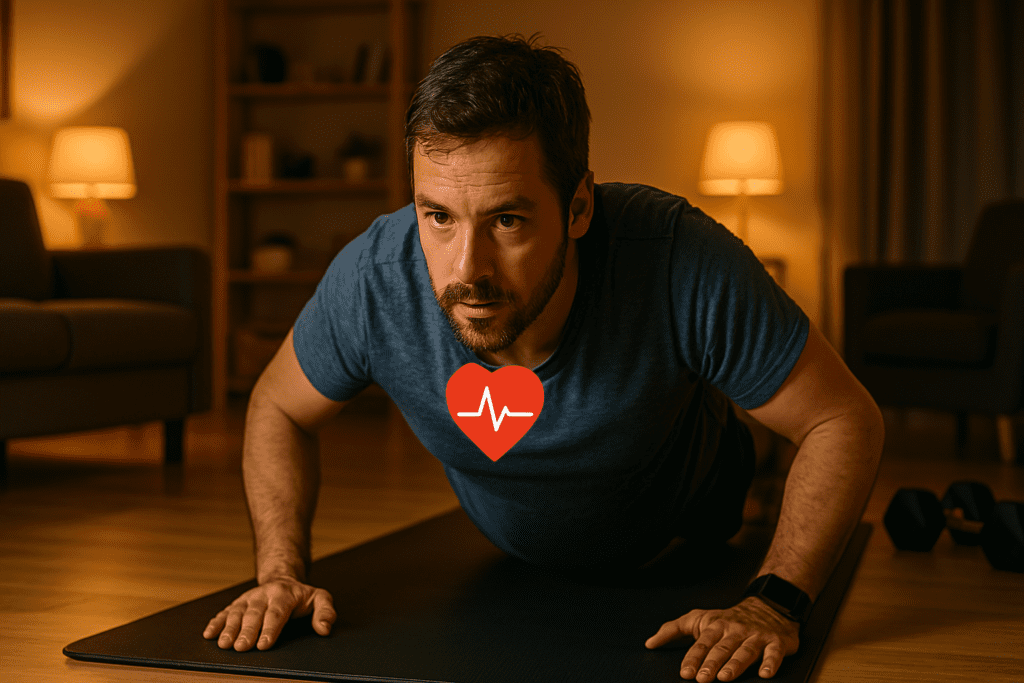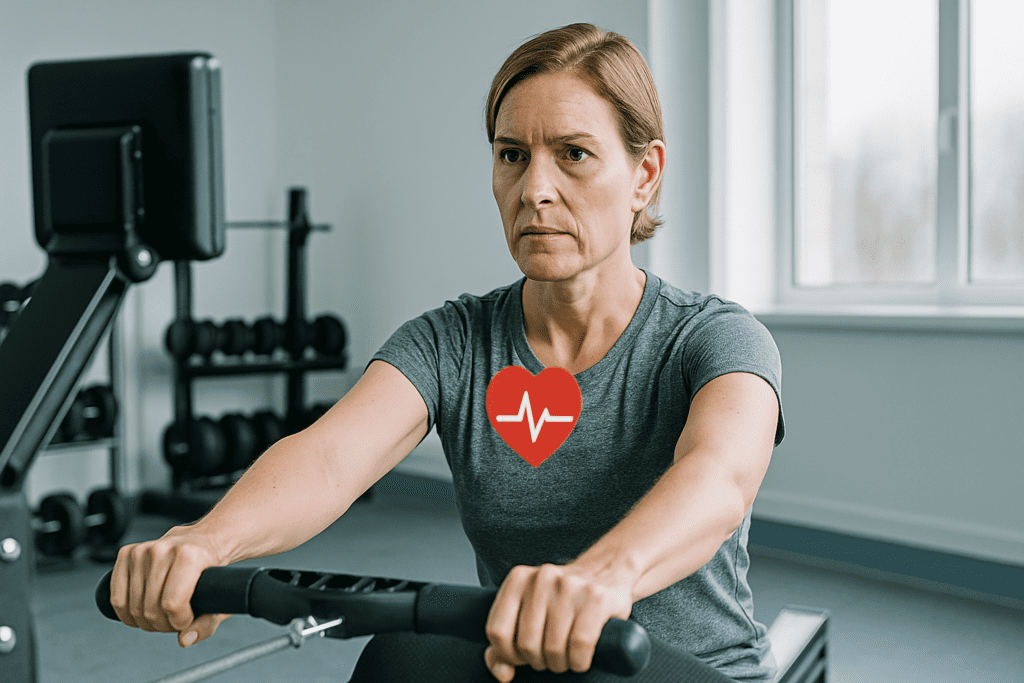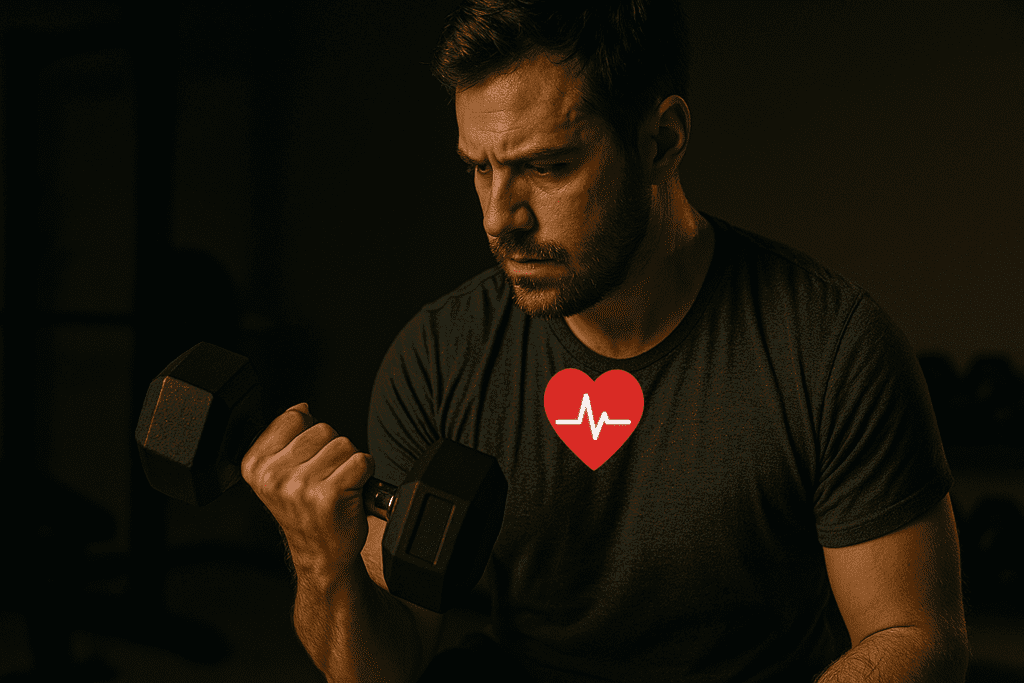How Cardiovascular Health and Home Fitness Are More Connected Than Ever
As cardiovascular disease continues to rank as the leading cause of death globally, the need for accessible, evidence-based strategies to protect heart health is more urgent than ever. While clinical interventions and medications play critical roles, lifestyle choices—particularly physical activity—stand at the forefront of preventive care. In recent years, a major shift has occurred in how people exercise. Traditional gym memberships have been steadily replaced or supplemented by at-home solutions, especially after the COVID-19 pandemic. This transformation in fitness behavior is not only convenient but also holds immense potential for cardiovascular wellness.
You may also like: Top Cardiologist-Approved Cardio Workouts to Improve Cardiovascular Fitness and Heart Health Naturally
The rise of home gym training has created opportunities for people to commit to regular exercise without the barriers of travel, scheduling constraints, or crowded gym spaces. The ability to design a personalized routine that caters to specific health goals—from lowering blood pressure to enhancing aerobic endurance—makes home gym workout strategies more relevant than ever. For those with cardiovascular concerns, such as hypertension, arrhythmia, or heart failure risk, incorporating structured home gym exercises provides a safe, adaptable path to long-term health improvements.
What’s more, the best at home fitness practices today are rooted in science. They encompass cardio, strength, flexibility, and recovery techniques tailored to individual risk profiles. These workouts are not generic YouTube routines; they are carefully curated and often designed in consultation with medical professionals and exercise physiologists. The accessibility of heart-smart home workouts makes them a vital tool in the fight against cardiovascular disease—and their effectiveness is supported by both clinical evidence and practical application.
Understanding the Cardiovascular Benefits of Exercise from a Medical Perspective
The cardiovascular system thrives on movement. Exercise promotes vasodilation, improves endothelial function, and supports optimal blood flow. It helps regulate cholesterol, blood glucose, and triglyceride levels, all of which are key factors in heart disease prevention. When patients engage in consistent physical activity—whether in a clinical rehab setting or through home gym training—there is often a measurable improvement in resting heart rate, blood pressure, and VO2 max, a key indicator of cardiorespiratory fitness.
Aerobic activities, such as brisk walking, cycling, or rowing, are especially beneficial. These types of movement increase oxygen demand and prompt the heart to work more efficiently over time. As a result, the heart muscles strengthen, and stroke volume improves—meaning the heart pumps more blood per beat with less effort. Even more promising is research showing that resistance training, which is often overlooked in home gym workouts, also contributes meaningfully to cardiovascular health. Strength-based home gym exercises help regulate blood sugar and reduce visceral fat, both of which are tightly linked to cardiovascular risk factors.
The integration of both aerobic and resistance elements into a comprehensive home gym workout routine allows individuals to reap the benefits of cross-training. This combination not only enhances fitness outcomes but also aligns with guidelines from reputable institutions such as the American Heart Association and the American College of Sports Medicine. The result is a robust, well-rounded approach to heart care—delivered from the comfort of home, and often without expensive equipment.
The Rise of Home Gym Training and What It Means for Heart Health
The evolution of home gym training is not simply a matter of convenience; it’s a shift toward empowerment and autonomy in health care. Technological advances have enabled a more personalized approach, allowing individuals to create an environment tailored to their cardiovascular needs. From smart wearables that track heart rate variability and exertion to apps that deliver medically informed training plans, today’s home gym setup is more sophisticated than ever.
This innovation has profound implications for individuals managing cardiovascular disorders. For example, someone recovering from a cardiac event may begin with low-impact, guided movements before progressing to moderate-intensity interval training. Others may incorporate dynamic stretching or yoga as part of their cardiovascular regimen to support autonomic nervous system balance and stress reduction. These customized paths, facilitated through home gym training, empower users to engage safely and consistently—two of the most critical variables in heart disease prevention and recovery.
Furthermore, for older adults or those with mobility issues, home-based exercise reduces the psychological and physical barriers to participation. No commute means fewer excuses. No intimidating gym culture means more confidence. Most importantly, the ability to self-monitor intensity, duration, and recovery intervals makes home gym workout strategies an ideal choice for anyone navigating cardiovascular concerns under medical supervision.

Structuring Home Gym Workouts for Optimal Cardiovascular Impact
A well-structured home gym workout program designed to support heart health must begin with intentional planning. This means choosing exercises that target endurance, circulation, muscle tone, and respiratory efficiency. It’s not enough to randomly select exercises off the internet. Instead, workouts should follow a progressive overload principle, ensuring that the cardiovascular system is gradually challenged while minimizing injury risk.
For cardiovascular enhancement, sessions should include a minimum of 150 minutes of moderate-intensity aerobic activity or 75 minutes of vigorous activity weekly, as recommended by the Centers for Disease Control and Prevention. This can be achieved through interval-style circuits combining jump rope, bodyweight squats, marching in place, or stair stepping. By elevating the heart rate into a moderate or vigorous zone and maintaining it through consistent movement, home gym exercises become highly effective at improving circulation and endurance.
Equally important is the inclusion of strength training two to three times per week. While it may not seem obvious, resistance exercises support cardiovascular health by increasing lean muscle mass, which in turn improves glucose metabolism and reduces the burden on the heart. Bodyweight exercises such as push-ups, lunges, planks, and resistance band routines are foundational in the best at home fitness plans and can be scaled for all ability levels. They offer a safe and efficient way to build strength and stability, which are essential for maintaining cardiovascular efficiency and reducing fall risk in older populations.
Safety Considerations When Performing Home Gym Exercises for Cardiovascular Support
While home-based fitness can yield significant benefits, safety remains paramount—especially for individuals with known cardiovascular disorders or risk factors. Before beginning any home gym training program, it is vital to consult a healthcare provider, particularly if there is a history of heart disease, high blood pressure, or arrhythmias. Medical clearance ensures that the workout plan can be appropriately modified to avoid overstimulation of the cardiovascular system.
One of the most important principles in safe exercise is self-monitoring. Individuals should learn to recognize signs of overexertion, such as dizziness, shortness of breath beyond normal limits, chest tightness, or irregular heartbeat. Using devices like pulse oximeters or heart rate monitors during home gym workouts can help users stay within safe intensity zones. This becomes especially critical during interval-based training, where heart rate fluctuations are more pronounced.
Cooling down properly is another crucial but often overlooked aspect of cardiovascular safety. After completing a home gym workout, allowing the heart rate to gradually return to baseline helps prevent venous pooling and supports healthy blood flow. Incorporating breathing exercises, stretching, or low-intensity walking into the final few minutes of the session can aid in recovery while also enhancing parasympathetic nervous system function. These small but significant practices make a big difference in the safety and sustainability of the best at home fitness routines.
Mental Health and Motivation: The Psychological Benefits of Exercising at Home
The connection between cardiovascular health and mental well-being is well established. Depression, anxiety, and chronic stress are all independent risk factors for heart disease. Engaging in regular physical activity helps regulate mood, improve sleep quality, and lower cortisol levels. When exercise becomes a part of a consistent routine, it also enhances self-efficacy, which is essential for long-term behavioral change in individuals managing cardiovascular risk.
Home gym exercises offer a unique psychological advantage by removing common external stressors associated with traditional fitness environments. There’s no pressure to perform, no need to navigate traffic or parking, and no anxiety about crowded locker rooms. This comfort factor reduces the mental friction that often prevents individuals from maintaining consistency. Additionally, having a dedicated workout space at home creates a psychological anchor for health-oriented behavior. When the environment cues the brain for action, habit formation becomes easier and more automatic.
Moreover, the ability to personalize one’s routine fosters intrinsic motivation. Whether it’s a calming yoga session for heart rate variability or a high-energy cardio blast, individuals can choose workouts that align with their emotional state and physical condition. This flexibility supports mental resilience and helps reinforce the connection between exercise and self-care, creating a positive feedback loop that benefits both mind and heart. In this way, the best at home fitness programs go beyond physical strength—they become tools for holistic wellness.
Real-World Success Stories and Clinical Backing of Home Fitness for Heart Health
The growing body of clinical evidence supporting home gym training is compelling. A study published in the Journal of the American College of Cardiology found that home-based cardiac rehabilitation programs can be just as effective as center-based ones in improving outcomes for heart attack survivors. Participants who followed structured home gym workouts under virtual supervision showed similar improvements in blood pressure, lipid profiles, and exercise capacity compared to those attending in-person rehab sessions.
Beyond the data, real-world stories provide tangible proof of how home gym exercises transform lives. Consider a 65-year-old patient recently diagnosed with coronary artery disease. After participating in a monitored home fitness plan tailored to her needs, she reported significant improvements in energy levels, mood, and daily function within three months. Her cardiologist noted a drop in her resting blood pressure and a 12% increase in her ejection fraction—a key measure of heart performance.
These outcomes are not isolated. Across the country, health systems are increasingly integrating home-based fitness into their preventive cardiology and post-discharge programs. Wearables, telehealth check-ins, and mobile apps enable ongoing support and accountability, blurring the lines between clinical care and self-managed wellness. As more individuals experience these benefits firsthand, the demand for effective, evidence-based home gym workout strategies will only continue to grow.
Choosing the Right Equipment and Tools for a Heart-Healthy Home Gym
Creating an effective home gym doesn’t require thousands of dollars or an entire spare room. In fact, some of the best tools for cardiovascular training are compact, affordable, and versatile. The key is to focus on functionality rather than flash. A good home gym setup begins with the essentials: a yoga mat for floor work and mobility, resistance bands for strength exercises, and a set of dumbbells or kettlebells for scalable resistance.
For those interested in boosting their aerobic capacity, options like a jump rope, mini stepper, or compact elliptical can offer an intense cardio challenge in a small footprint. Rowing machines and stationary bikes are excellent for low-impact yet effective heart training, especially for those managing joint issues. Many users also benefit from using a stability ball, which can engage core muscles while supporting posture—an underrated but important factor in blood flow and respiratory efficiency.
Tech integrations can further enhance the home gym workout experience. Heart rate monitors, smart watches, and guided apps enable users to monitor their exertion levels, ensuring that each session stays within a target cardiovascular zone. These devices not only provide motivation and insight but also offer a layer of safety—especially valuable for users managing hypertension, arrhythmias, or recovering from heart-related events. Ultimately, the best at home fitness tools are those that match your specific health goals, available space, and budget, all while keeping safety and heart health at the core of your routine.

How to Sustain Long-Term Cardiovascular Gains with Home Fitness
One of the most underestimated aspects of exercise is not the workout itself, but the consistency with which it’s performed. This is where home gym training offers a considerable advantage. When barriers are low and routines are flexible, the likelihood of long-term adherence increases significantly. And for cardiovascular health, consistency is everything. Improvements in blood pressure, heart rate variability, and endothelial function are all cumulative—they require ongoing effort over weeks and months.
To sustain long-term gains, it’s essential to periodically reassess your progress and adjust your home gym workout accordingly. This might mean increasing the intensity or duration of your sessions, adding new exercises to target different muscle groups, or integrating more rest and recovery days to support heart resilience. Keeping things fresh prevents both physiological plateaus and mental burnout, ensuring that motivation stays high and results continue to accrue.
Social accountability also plays a role in long-term success. Virtual classes, fitness tracking groups, or simply sharing your goals with family can help keep you on track. Many successful home gym training practitioners report that scheduling their workouts like appointments—and treating them with the same level of importance—was key to sustaining results. These strategies create a sense of structure and intention, two critical ingredients for enduring cardiovascular health improvements.
Frequently Asked Questions: Home Gym Fitness for Cardiovascular Health
1. Can home gym training be tailored for individuals recovering from heart surgery or cardiac events?
Yes, home gym training can absolutely be adapted for individuals in cardiac recovery, but it must be approached with clinical oversight. Many patients begin their post-surgery rehab in a monitored setting, and once stable, are cleared to transition into home-based fitness programs. At this point, low-impact movements like gentle cycling, resistance band stretches, and light treadmill walking can form the foundation of a safe home gym workout. It’s essential to prioritize gradual progression and to incorporate heart rate monitoring to stay within medically recommended zones. With proper structure and regular check-ins with healthcare providers, home gym exercises can serve as a powerful tool for long-term recovery and cardiovascular reconditioning.
2. How can older adults benefit from the best at home fitness routines without increasing fall risk or joint strain?
For older adults, the best at home fitness plans emphasize joint protection, balance enhancement, and gradual cardiovascular conditioning. Chair-based routines, standing balance drills, and resistance band strength work are particularly useful. Unlike many high-impact group classes, home gym exercises can be customized to avoid floor transitions or quick directional changes that may pose a fall risk. Additionally, integrating proprioceptive training—like heel-to-toe walking or single-leg stands—into a home gym workout helps sharpen coordination and reduce the likelihood of accidents. When paired with functional movement assessments and basic mobility tools, home gym training can safely support both cardiovascular and musculoskeletal resilience in aging populations.
3. What are the most overlooked tools that can improve cardiovascular outcomes during home gym workouts?
While treadmills and stationary bikes often dominate the spotlight, there are several underutilized tools that can elevate heart health through home gym training. A weighted vest, for example, can safely increase the intensity of walks or bodyweight routines, adding a cardiovascular challenge without high impact. Similarly, agility ladders promote coordination and cardio endurance while improving neuromuscular connection. Using a metronome app to control tempo during strength-based home gym exercises can also encourage a steady cardiovascular load. These nuanced additions to the best at home fitness routines help avoid monotony, increase functional capacity, and engage the heart in unique ways that go beyond traditional cardio.
4. How does home gym training impact blood pressure regulation compared to outdoor or group exercise settings?
Home gym training can offer superior blood pressure management for individuals with hypertension due to its controlled environment and consistency. Unlike outdoor or group classes, which may vary in intensity or schedule, a home gym workout allows users to design routines that steadily elevate and sustain moderate heart rate zones known to lower systolic and diastolic pressure over time. Moreover, the privacy and comfort of home reduce performance anxiety—a factor that can transiently raise blood pressure during public workouts. By eliminating environmental stressors and allowing for uninterrupted routines, home gym exercises create a predictable and low-risk framework for effective hypertension management.
5. Are there psychological techniques that enhance motivation for sticking with a home gym workout long-term?
Yes, leveraging behavioral psychology can make a significant difference in adherence to home gym training. One effective method is habit-stacking, where new fitness behaviors are linked to existing daily routines—like doing a five-minute warm-up right after brushing your teeth. Visual cues, such as leaving workout gear in plain sight, can also prompt action. Creating a reward loop—like journaling progress or checking off goals—builds intrinsic motivation over time. For many, scheduling a virtual workout with a friend, even asynchronously, introduces subtle accountability that enhances consistency. These techniques reinforce commitment to the best at home fitness strategies by making workouts not just accessible but also psychologically rewarding.
6. What is the role of breathing techniques in home gym exercises aimed at improving heart health?
Breathwork is a powerful but often overlooked component of home gym workout routines designed for cardiovascular support. Slow, diaphragmatic breathing enhances vagal tone, which helps regulate heart rate and supports autonomic balance. Incorporating breath control during strength or isometric holds can prevent unnecessary spikes in blood pressure—especially important for individuals with pre-existing cardiovascular concerns. Some home gym training programs now include dedicated breath training segments, where guided exercises like box breathing or pursed-lip exhalations are used to modulate heart rate variability. Over time, these techniques help foster a state of physiological calm and improve recovery between higher intensity efforts.
7. Can wearable tech improve the effectiveness of home gym training for cardiovascular outcomes?
Absolutely. Wearable technology has revolutionized home gym training by turning subjective effort into measurable data. Smartwatches and fitness trackers can monitor heart rate zones, giving users real-time feedback on whether they’re training aerobically, anaerobically, or in recovery. More advanced models even assess heart rate variability, an emerging marker of cardiovascular resilience and recovery readiness. When used alongside home gym exercises, these tools help fine-tune intensity levels, prevent overtraining, and ensure that the best at home fitness plans align with individual physiological responses. By fostering a more data-driven approach, wearable tech transforms home workouts into precision-targeted cardiovascular interventions.
8. How do seasonal or geographic limitations impact home gym workout consistency, and how can they be addressed?
One of the key benefits of home gym training is its immunity to seasonal fluctuations or environmental unpredictability. However, people living in small apartments or regions with extreme temperatures may still face challenges. In these cases, creative use of space—such as vertical storage for equipment, collapsible workout benches, or wall-mounted resistance systems—can optimize limited environments. Portable fans, proper lighting, and non-slip flooring enhance safety and comfort, encouraging year-round participation. Adapting home gym exercises to be space-efficient and weather-independent ensures that even those with spatial or environmental limitations can engage in the best at home fitness practices without interruption.
9. What are the early signs that a home gym workout may need to be adjusted for heart health optimization?
Early indicators that your home gym workout may need a cardiovascular update include stagnation in resting heart rate, reduced perceived exertion during routines, or lack of progress in aerobic capacity. While these may suggest growing fitness, they also signal that the current routine may no longer provide sufficient challenge to support continued heart health improvement. Additionally, persistent fatigue, poor sleep quality, or irregular recovery heart rates can indicate overtraining or a mismatch in training intensity. Adjusting your home gym training by increasing duration, modifying resistance, or incorporating varied cardio intervals can re-engage cardiovascular systems and restore upward momentum.
10. What innovations in the fitness industry are shaping the future of the best at home fitness programs for heart health?
The future of home gym training lies in personalization powered by artificial intelligence and adaptive programming. New platforms now offer dynamic routines that adjust in real time based on biometrics, fatigue scores, and even mood tracking. Smart home gym equipment, such as AI-guided resistance systems or connected rowing machines, delivers studio-level coaching with medical-grade data integration. Additionally, heart-focused fitness communities are emerging online, blending peer support with clinical oversight for high-risk populations. As the technology matures, these tools will further refine the best at home fitness programs, ensuring that heart-focused exercise becomes safer, smarter, and more sustainable for diverse users around the world.

Final Thoughts: Achieving Heart-Healthy Results with the Best at Home Fitness Approach
In a world where convenience often competes with health priorities, the emergence of effective, medically informed home fitness options marks a turning point. Home gym workouts are no longer a makeshift solution—they are a clinically backed, highly customizable, and psychologically empowering strategy for promoting cardiovascular health. Whether you are managing a diagnosis, preventing disease, or simply striving for better overall fitness, the best at home fitness practices offer a reliable, sustainable path forward.
By embracing the science of movement, prioritizing safety, and cultivating a mindset of consistency and care, individuals can achieve meaningful improvements in heart function, metabolic health, and quality of life. With the right tools, expert guidance, and a willingness to invest in one’s well-being, home gym training becomes far more than a convenience—it becomes a life-changing approach to health.
The future of cardiovascular care lies not only in hospitals or clinics but in the everyday decisions we make at home. And as more people discover the transformative potential of home gym exercises, a new era of empowered, heart-conscious living is taking shape—one that’s built not on expensive memberships or trend-driven routines, but on science, sustainability, and self-efficacy.
cardio workouts at home, strength training for heart health, heart-healthy exercise routines, low-impact fitness for seniors, cardiovascular rehabilitation exercises, indoor aerobic training, beginner fitness routines, blood pressure and exercise, home-based cardiac rehab, wearable fitness technology, smart home gym equipment, resistance band workouts, safe workouts for heart patients, virtual personal training, fitness recovery strategies, aerobic endurance improvement, daily exercise for heart health, fitness habit formation, home fitness for older adults, exercise and heart rate variability
Further Reading:
The ‘best’ cardio workout for a healthy heart
Physical Activity and Your Heart
Cardio Workouts to Boost Heart Health
Disclaimer
The information contained in this article is provided for general informational purposes only and is not intended to serve as medical, legal, or professional advice. While MedNewsPedia strives to present accurate, up-to-date, and reliable content, no warranty or guarantee, expressed or implied, is made regarding the completeness, accuracy, or adequacy of the information provided. Readers are strongly advised to seek the guidance of a qualified healthcare provider or other relevant professionals before acting on any information contained in this article. MedNewsPedia, its authors, editors, and contributors expressly disclaim any liability for any damages, losses, or consequences arising directly or indirectly from the use, interpretation, or reliance on any information presented herein. The views and opinions expressed in this article are those of the author(s) and do not necessarily reflect the official policies or positions of MedNewsPedia.


